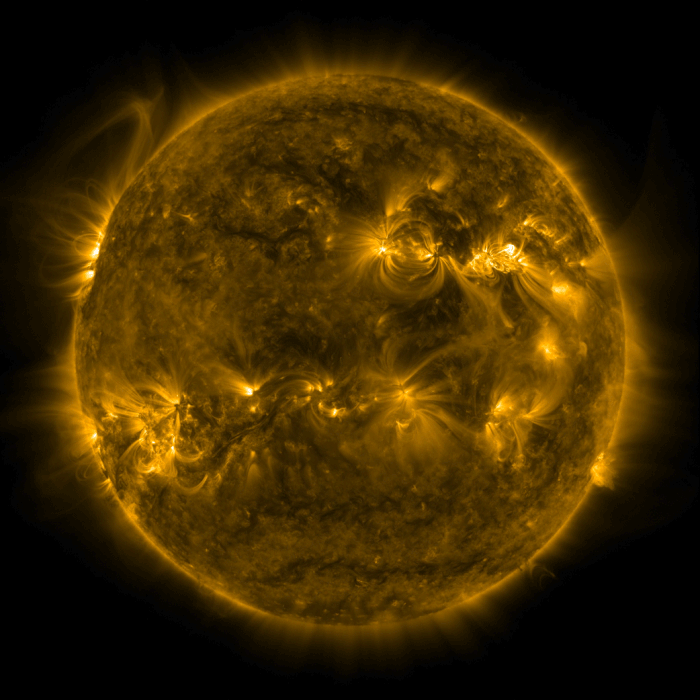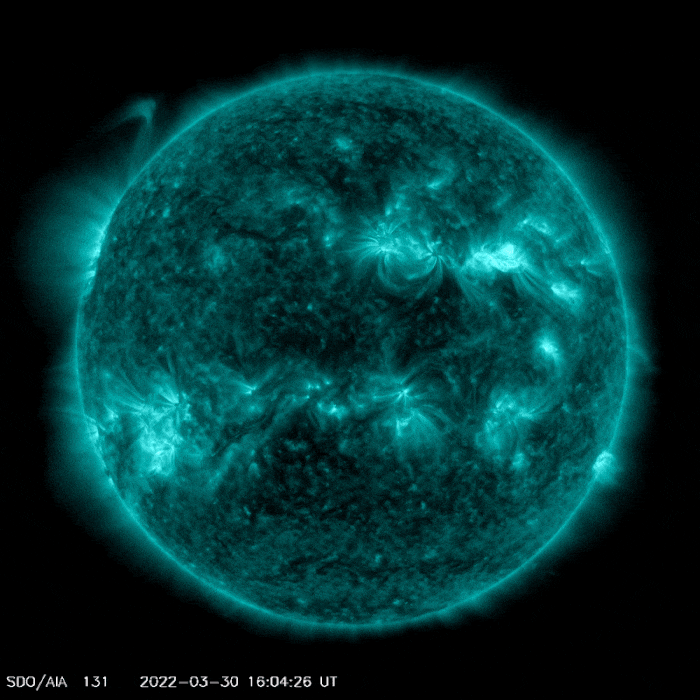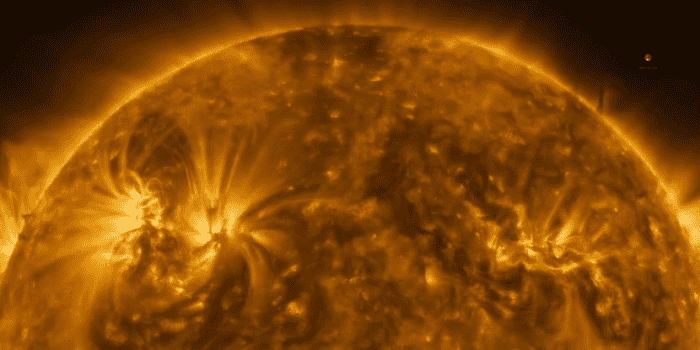On March 30, 2022, at 1:35 p.m. EST, NASA’s Solar Dynamics Observatory (SDO) captured a significant solar eruption. These flares were emitted by active sunspot AR2975. The same sunspot has recently erupted more than 17 moderate-sized flares, but this one is more powerful.
“Aviators, mariners, and ham radio operators may have noticed unusual propagation effects at frequencies below 30 MHz [megahertz],” the website reported after the flash.

AR2975 has so far emitted 36 flares. One slight B-class flare, 29 medium C-class flares, nine powerful M-class flares, and one X-class flare that indicates the most intense flares. The radiation from the flare ionised the Earth’s upper atmosphere. This contributed to a nationwide shortwave radio blackout across America.
“Strong G3-class geomagnetic storms are possible during the early UT hours of March 31st when a Cannibal CME is expected to hit Earth’s magnetic field. During such storms, naked-eye auroras can descend into the USA as far south as, e.g. Illinois and Oregon,” says SpaceWeather.com, space news and information site authored by professional astronomer Tony Phillips.
Sunspots are areas of the sun’s surface that appear darker than the rest and appear when the sun’s magnetic lines twist and suddenly realign near the visible surface. Coronal mass ejections (CMEs) are sometimes associated with these sunspots. Suppose a coronal mass ejection emerges from the flare and is directed toward Earth. In that case, it could cause auroras, which are spectacular light displays caused by charged particles colliding with the Earth’s atmosphere.

According to SpaceWeather, there is circumstantial evidence of a CME eruption from the sun, but more observations are needed to confirm this.
“A CME is almost certainly emerging from the blast site,” SpaceWeather continued, noting that the U.S. Air Force has detected a Type II solar radio burst that can be associated with the shock waves of a CME.
“Also, NASA’s Solar Dynamics Observatory has imaged a solar tsunami apparently generated by a CME leaving the sun’s atmosphere,” SpaceWeather added.
SDO recorded the event at 1:35 p.m. EST (1835 GMT), but NASA did not provide a detailed forecast beyond mentioning the risks associated with solar flares.
“Flares and solar eruptions can impact radio communications, electric power grids, navigation signals, and pose risks to spacecraft and astronauts,” NASA officials stated.
The current solar activity cycle began in 2019 and is expected to end around 2025. Scientists aren’t sure how active this solar cycle will be, but fewer sunspots are expected than usual.
_1641610017542_1648717798163.jpg)
NASA and other space agencies keep a close eye on the sun to improve solar weather forecasting. When charged particles collide with Earth’s magnetic lines, CMEs often result in auroras. On the other hand, more powerful storms may disrupt satellites or power lines.


